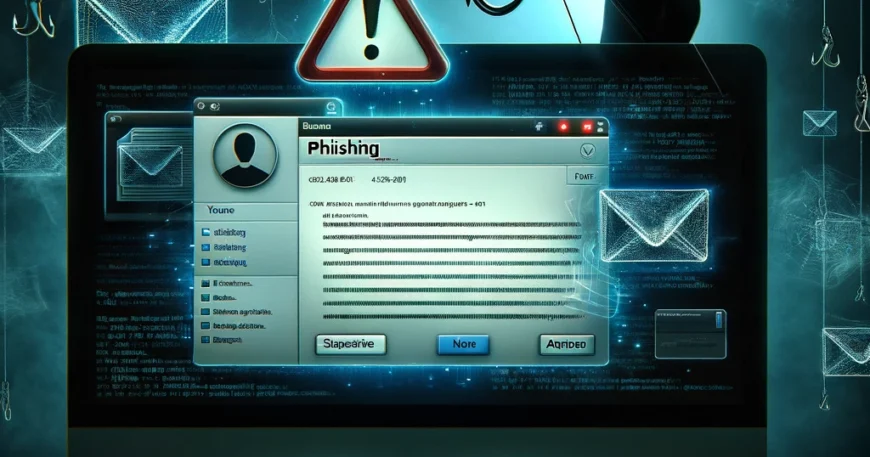In our upcoming exploration, we delve into the intricate world of phishing, a cyber menace that ingeniously manipulates digital communications to mislead individuals and siphon off sensitive data. This comprehensive guide embarks on a journey through the latest trends, dissecting the mechanics behind phishing and its notorious linkage to ransomware attacks. We’ll scrutinize the prevalence of phishing in comparison to other cyber threats, detail targeted and broad-spectrum attack strategies, and unfold the layers of sophisticated phishing methods including spear phishing, vishing, whaling, smishing, and angler phishing.
By examining daily attack volumes and the staggering commonality of these incursions, we navigate through the murky waters of phishing versus blagging, elucidating why despite heightened awareness, phishing continues to ensnare countless victims. Highlighting its contribution to data breaches and the alarming frequency of targeted business attacks, we’ll offer a panoramic view of phishing’s role in the cyberattack ecosystem. Our narrative concludes with actionable insights and a clarion call for vigilance, underscoring the imperative of collective cybersecurity resilience against phishing’s unyielding tide.
What is Phishing
Phishing is a form of cyber deception where attackers pose as legitimate entities to trick individuals into revealing personal information, such as passwords, credit card numbers, and social security details. It’s akin to fishing, where cybercriminals “bait” their targets with seemingly trustworthy emails or messages. Once the “bait” is taken, victims can find themselves at significant risk of identity theft, financial loss, and privacy breaches. This tactic relies heavily on social engineering, exploiting human psychology and trust to manipulate users into making security mistakes or giving away sensitive information without realizing the potential consequences.
Phishing Trends
The landscape of phishing attacks has evolved significantly, showcasing a sharp increase in both volume and sophistication. Attackers now employ a diverse arsenal of tactics extending beyond traditional email phishing to include smishing (SMS phishing) and vishing (voice phishing). These methods are particularly insidious as they leverage real-time events and exploit social engineering techniques to heighten their effectiveness. By capitalizing on current news, societal fears, or trending topics, attackers craft more believable and enticing lures. This evolution in phishing tactics underscores the adaptability of cybercriminals and the increasing need for individuals and organizations to stay vigilant and informed about the latest cybersecurity threats.
Links Between Phishing and Ransomware
Phishing is a prevalent vector for ransomware attacks because it exploits human vulnerability to gain unauthorized access to systems. In these schemes, attackers use phishing emails to deceive recipients into clicking malicious links or opening infected attachments, leading to the installation of ransomware. This malware encrypts the victim’s data, rendering it inaccessible until a ransom is paid. The success of this approach lies in its simplicity and the psychological manipulation involved, making it a favored method for cybercriminals to initiate ransomware attacks, causing significant data breaches and financial losses.
Is Phishing the Most Common Cyberattack?
Phishing is indeed one of the most common cyberattacks, primarily because it directly targets the most unpredictable element of cybersecurity: human behavior. While there are numerous types of cyber threats, phishing’s effectiveness and ease of deployment make it a particularly persistent and pervasive method. It serves as a foundation for many other forms of cybercrime, including the distribution of malware, ransomware, and identity theft. Its adaptability to current events and the digital environment contributes to its continued prevalence, making it a top concern for both individuals and organizations in maintaining cybersecurity.
Types of Phishing Attacks
- Spear Phishing: Tailored to deceive specific individuals or entities, utilizing personal information to increase authenticity and prompt interaction with malicious content.
- Mass Phishing: Targets a broad audience with generic emails, relying on volume to secure a fraction of recipients responding, leading to data theft or malware spread.
- Spear Phishing: Targets specific individuals with emails that appear to come from a known or trusted sender. The attacker gathers personal information about the target to craft a convincing message, aiming to steal sensitive information or install malware.
- Whaling: A subset of spear phishing, targeting high-level executives (the “big fish”) with more sophisticated and personalized attacks. These emails often mimic corporate communications and require a deep understanding of the company’s operations.
- Smishing: Uses SMS messages instead of emails to deceive recipients into revealing personal information or downloading malware. These messages may prompt the recipient to visit a malicious website or call a fraudulent phone number.
- Vishing: Involves voice calls instead of digital messages. Attackers may impersonate legitimate institutions, such as banks or government agencies, to extract personal and financial information from victims.
- Angler Phishing: Utilizes social media platforms to mimic customer service accounts, reaching out to unsuspecting users with fake support offers. These attacks aim to steal login credentials or personal data by directing victims to phishing sites or convincing them to divulge sensitive information directly.
How many phishing emails are sent daily?
An estimated 3.4 billion phishing emails are sent out each day worldwide in 2024. This staggering number underscores the scale and persistence of phishing as a cybersecurity threat.
Statistics on Phishing
Phishing attacks are alarmingly common, with millions of phishing emails sent daily around the globe. Annually, these attacks amount to significant numbers, illustrating not just the frequency but also the widespread nature of this threat. The constant evolution of phishing tactics contributes to its effectiveness, making it a prevalent issue for individuals and organizations alike. This high volume of attacks underscores the importance of robust cybersecurity measures and continuous vigilance to mitigate the risk of falling victim to phishing schemes.
Phishing vs. Blagging
Phishing and blagging are both deceptive techniques but differ in their approach and execution. Phishing is a broad strategy targeting masses through digital means (like emails or messages) to trick individuals into revealing sensitive information. Conversely, blagging is a more direct and often person-to-person deception, aiming to gain unauthorized access or confidential information through impersonation or manipulation, typically over the phone or through direct interaction, without the widespread net cast by phishing.
Why Phishing Remains Successful
Phishing remains successful due to its exploitation of psychological tactics such as creating a sense of urgency and asserting authority. These techniques play on human emotions and cognitive biases, compelling individuals to act quickly without thorough scrutiny. Even with growing awareness and education on cybersecurity threats, these psychological manipulations can override rational thought, leading to successful deception. The sophisticated and continually evolving nature of phishing attacks also contributes to their success, as attackers find new ways to bypass security measures and exploit human vulnerabilities.
Impact of Phishing
Phishing significantly impacts data security, with a considerable percentage of data breaches initiated through phishing emails. These breaches can lead to substantial financial losses, reputational damage, and legal consequences for affected organizations. The targeted nature of spear-phishing also emphasizes the daily threat businesses face, as attackers meticulously craft emails to breach specific organizations, extracting valuable information or deploying malicious software.
Cybersecurity Incident Statistics
Phishing plays a pivotal role in cybersecurity incidents, with a notable percentage of these incidents starting from an employee falling victim to a phishing scam. This highlights the critical need for ongoing employee education on cybersecurity threats and robust security protocols. The success of phishing in initiating such incidents underscores its effectiveness as a penetration method for broader cyber-attacks, making it a central focus for cybersecurity defenses.
Conclusion
In conclusion, this document has delved into the multifaceted world of phishing, shedding light on its prevalence, methodologies, and the severe implications it holds for data security. We’ve explored its various forms, from spear phishing to more innovative tactics like smishing and vishing, demonstrating the adaptability and persistence of cybercriminals. The discussion underlines the critical importance of vigilance and proactive measures in combating phishing threats. As cyber threats evolve, so too must our defenses, emphasizing continuous education, technological safeguards, and a culture of cybersecurity awareness as our best countermeasures. If you want to keep up with the latest Phishing News the AP has an entire webpage for it.
Do you need help with phishing? Cynxt can help! We provide IT Solutions that will provide you a peace of mind. Contact Us today or call (256) 456-5858 to schedule an appointment. We are located at the Shoals Business Incubator in Florence, AL. Let us help you keep your digital life running smoothly!
Cynxt Service Areas:
We proudly serve businesses in the following areas and surrounding cities. Click here to view the full list. Remote support is also available for businesses anywhere.
North Alabama:
- Florence
- Muscle Shoals
- Russellville
- Athens
- Decatur
- Huntsville
Middle Tennessee:
- Franklin
- Columbia
- Lawrenceburg
- Pulaski
About Us:
With over 18 years of IT experience, Cynxt IT Services delivers enterprise-level solutions tailored to small and medium-sized businesses. As a trusted Managed Service Provider (MSP), we’re dedicated to supporting your growth with reliable, expert IT services and unmatched customer care.
Services:
Explore our wide range of IT Services. Learn more about how we can help with your IT needs. Not finding the service you’re looking for? Contact Us to discuss custom solutions.
- Managed IT Services
- Hourly IT Support
- Cybersecurity
- Cloud Services
- Networking
- Network Cabling
- IT Consulting





